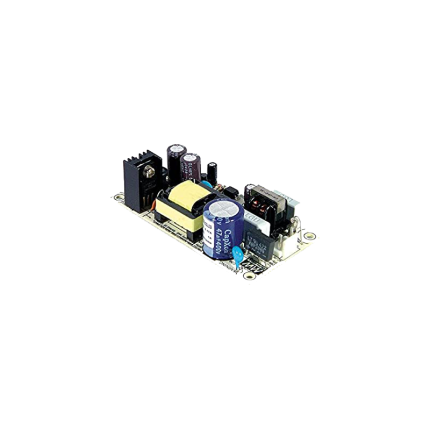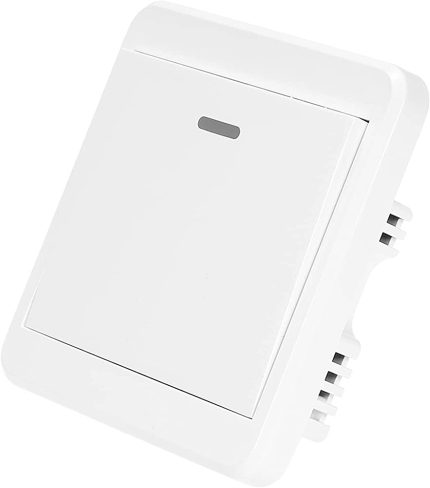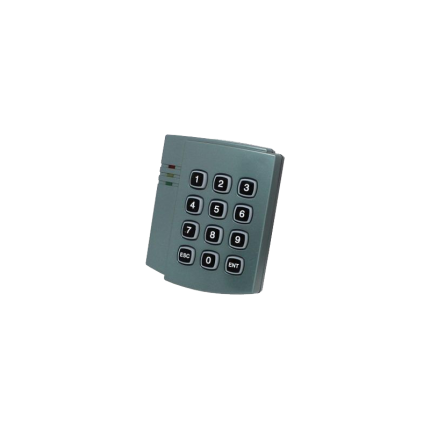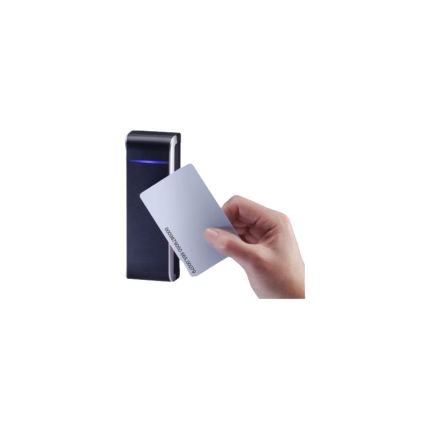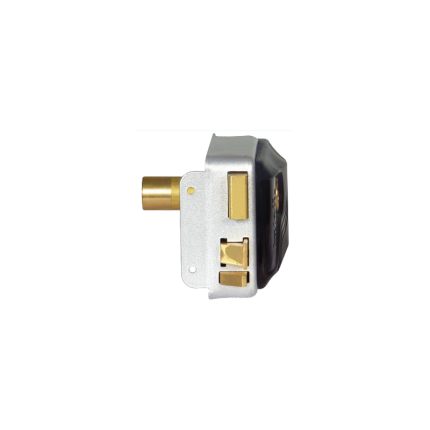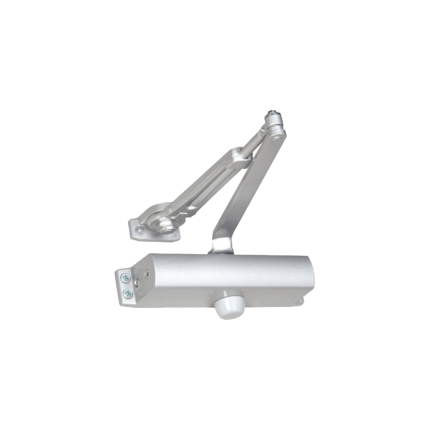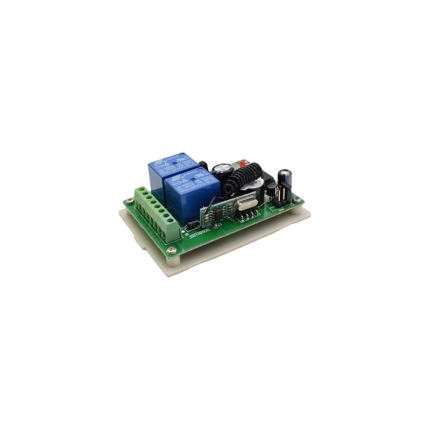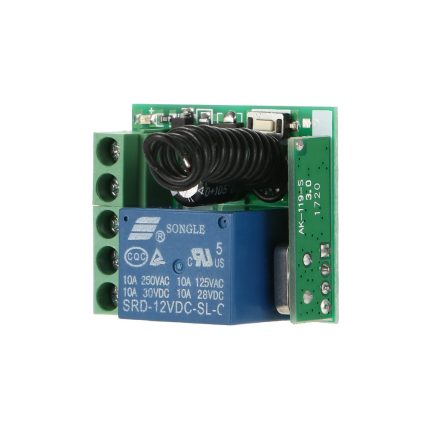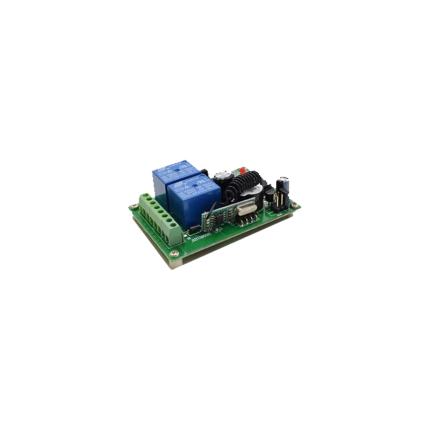Shop
Power converters – AC 24 V to DC 15 V
Ship or pick up from our office.
Power converters - AC 24 V to DC 15 V
A "Power converter - AC 24 V to DC 15 V" is a device that transforms an alternating current (AC) input of 24 volts into a direct current (DC) output of 15 volts. Here's a breakdown of what that means and how it works: AC (Alternating Current): This is the type of electricity typically supplied by wall outlets in homes and businesses. The voltage constantly changes direction, flowing back and forth. 24V AC is a common voltage for certain low-voltage control systems, industrial equipment, and sometimes HVAC systems. DC (Direct Current): This is the type of electricity that flows in only one direction. Most electronic devices, like phones, laptops, and many sensors or control circuits, require DC power. How an AC to DC Converter Works: An AC to DC converter (also known as a rectifier or power supply) typically involves several stages:- Step-Down Transformer: The initial 24V AC is usually too high for direct conversion to 15V DC. A transformer "steps down" this AC voltage to a lower, more manageable AC voltage.
- Rectification: This is the core of the AC to DC conversion. Diodes are used to convert the alternating current into a pulsating direct current. There are different types of rectifiers (half-wave, full-wave, bridge) that achieve this with varying degrees of efficiency and ripple.
- Smoothing (Filtering): The pulsating DC output from the rectifier isn't perfectly smooth. Capacitors are used to "smooth out" these ripples, creating a more stable DC voltage.
- Regulation: To ensure a precise and constant 15V DC output, a voltage regulator is often employed. This circuit maintains the output voltage at the desired level, even if the input voltage fluctuates or the load on the power supply changes.
- Industrial control systems: Powering sensors, actuators, and control circuits that operate on 15VDC.
- HVAC systems: Often 24VAC is used for thermostats and control panels, but some components within the system might require 15VDC.
- Security systems: Powering cameras, access control devices, and other equipment.
- Lighting systems: Especially in specialized LED lighting setups.
- Custom electronics projects: Where a stable 15VDC is needed from an existing 24VAC infrastructure.
- Output current (Amps): How much current the connected device needs.
- Power rating (Watts): The total power the converter can deliver.
- Efficiency: How much energy is lost during the conversion process (higher efficiency means less heat and less wasted energy).
- Protection features: Over-voltage, over-current, short-circuit protection for safety and device longevity.
- Form factor: Whether it's an open-frame, enclosed, or DIN-rail mount design.
Keypad access control K100SC104
Ship or pick up from our office.
Keypad access control K100SC104
(Recommended for indoor usage) *Rain Shield Cover is included *Waterproof Version *EM/ID card/tag reader *Backlight *500 User *DC 12 VRFID Tag Access Control
Ship or pick up from our office.
RFID Tag Access Control
RFID Tag Access Control is a system that uses Radio Frequency Identification (RFID) technology to manage and control access to physical spaces or logical systems. It allows only authorized individuals or items to enter secure areas by wirelessly reading data stored on RFID tags. Think of it as a modern, electronic key system where your "key" is an RFID tag (like a card or key fob) and the "lock" is an RFID reader. How it Works ⚙️ The fundamental principle is straightforward:- RFID Tag/Credential: Each authorized individual or item is assigned an RFID tag. This tag contains a microchip that stores a unique identification code and an antenna.
- RFID Reader: A reader (also called an interrogator) is installed at the access point (e.g., a door, gate, or turnstile). The reader emits radio waves.
- Communication: When an RFID tag comes within range of the reader's radio waves, the tag's antenna captures energy from the reader's signal (for passive tags) or uses its own power source (for active tags) to activate its microchip. The tag then transmits its unique data back to the reader.
- Data Processing: The reader decodes the information from the tag and sends it to a central access control software or system.
- Authentication and Decision: The software compares the tag's unique ID with a database of authorized users and their assigned permissions. If the ID is valid and the user has permission to access that specific area at that time, the system sends a signal to unlock the door, open the gate, or grant access. If not, access is denied.
- Logging: The system typically logs every access attempt (both granted and denied), providing an audit trail for security monitoring and compliance.
- RFID Tag Access Controls/Credentials: These are the physical devices carried by users. They come in various forms, such as:
- Cards: Similar to credit cards, commonly used for employee badges or hotel key cards.
- Key Fobs: Small, convenient devices attached to keychains.
- Wristbands: Often used in recreational facilities or for events.
- Stickers/Labels: Can be affixed to items or vehicles.
- Mobile Credentials: Increasingly, smartphones can act as RFID tags through NFC (Near Field Communication), a subset of HF RFID.
- RFID Readers: Devices that emit radio waves to energize and read data from RFID tags. They can be fixed (at entry points) or mobile (handheld scanners).
- Antennas: Integral to the reader (or external), they transmit and receive radio signals to and from the tags. The antenna design influences the read range and reliability.
- Access Control Software/Management System: The "brain" of the system. This software manages user databases, assigns access permissions, logs events, and allows administrators to configure and monitor the system remotely.
- Access Control Panel/Controller: Hardware that connects the readers to the central software, processing data and controlling the locking mechanisms.
- Passive RFID Tags:
- Do not have an internal power source.
- They draw power from the radio waves emitted by the reader to operate.
- Are generally smaller, less expensive, and require no maintenance.
- Have a shorter read range (a few centimeters to a few feet).
- Most commonly used in access control for cards and key fobs.
- Active RFID Tags:
- Have their own internal power source (battery).
- Can transmit data over longer distances (up to several hundred meters) and at regular intervals.
- Are larger and more expensive.
- Often used for long-range applications like vehicle tracking or asset management.
- Semi-Passive RFID Tags (Battery-Assisted Passive - BAP):
- Contain a battery to power the microchip, but still rely on the reader's signal to initiate communication.
- Offer better read range and performance than passive tags, without continuously transmitting like active tags.
- Low Frequency (LF) RFID (125-134 kHz):
- Short read range (1-10 cm).
- Less susceptible to interference from metal and water.
- Common in traditional access control systems.
- High Frequency (HF) RFID (13.56 MHz):
- Moderate read range (10 cm-1 meter).
- Widely used for access control, ticketing, and Near Field Communication (NFC) applications (like smartphone taps).
- Ultra-High Frequency (UHF) RFID (300 MHz-3 GHz, often 860-960 MHz for RAIN RFID):
- Long read range (up to 12 meters).
- More susceptible to interference from liquids and metals.
- Used in applications requiring longer read distances, such as vehicle access control or large-scale inventory tracking.
RFID Card Access Control
Ship or pick up from our office.
RFID Card Access Control
RFID card access control is a system that uses Radio Frequency Identification (RFID) technology to manage and control access to physical spaces. It provides a secure and convenient way to grant or deny entry to authorized individuals, replacing traditional keys or swipe cards. This system works by wirelessly communicating between an RFID card (or tag) and an RFID reader. How it Works- RFID Card (Tag): Each authorized individual carries an RFID card, key fob, or even a smartphone with an embedded RFID chip. This chip contains a unique identification code and sometimes other encrypted data.
- RFID Reader: Readers are installed at entry points (doors, gates, elevators, etc.). They constantly emit a radio frequency field.
- Communication: When an RFID card enters the reader's field, the card's antenna captures energy from the reader's signal. This energizes the microchip on the card, allowing it to transmit its unique data back to the reader.
- Data Verification: The RFID reader decodes the information from the card and sends it to a central access control server or control panel. This server compares the card's data with a secure database of authorized users and their access permissions.
- Access Grant/Denial: If the credentials match an authorized profile, the system sends a signal to an electronic lock mechanism, allowing entry. If not, access is denied. This entire process typically happens in milliseconds.
- Audit Trail: The system also records detailed access information, including the time, date, and specific access point used, providing a valuable audit trail for security purposes.
- RFID Cards/Tags: These are the credentials held by users, typically in the form of plastic cards, key fobs, or even integrated into mobile devices. They contain a microchip and an antenna.
- RFID Readers (Interrogators): Devices installed at entry points that emit radio waves to communicate with the tags and read their data.
- Access Control Panel/Server: This is the "brain" of the system. It receives data from the readers, verifies user credentials against a database, and controls the electronic locks. It can be cloud-based or local.
- Electronic Locks: Devices that secure the entry points and are controlled by the access control system (e.g., magnetic locks, electric strikes).
- Access Control Software: Software used to manage user profiles, set access levels, monitor events, and generate reports.
- Passive RFID Tags: Most common for access control. They don't have an internal battery and are powered by the electromagnetic field emitted by the reader. They have a shorter read range (a few centimeters to a meter).
- Active RFID Tags: These tags have their own power source (battery), allowing for a much longer read range (up to several hundred meters) and the ability to broadcast signals periodically. They are typically more expensive.
- Semi-Passive RFID Tags: These tags have a battery to power the chip but only transmit data when activated by a reader's signal, offering improved sensitivity and performance over passive tags.
- Convenience: Offers contactless and keyless entry, making it fast and easy for users to gain access. Cards can often be read from inside a wallet or bag.
- Enhanced Security: Provides unique identification and can utilize encrypted communication, making tags difficult to duplicate. Lost cards can be immediately deactivated, preventing unauthorized use.
- Efficiency: Streamlines entry and exit processes, reducing wait times, especially in high-traffic areas.
- Flexibility & Scalability: Easily allows for adjusting access permissions for different users, areas, or time frames. Systems can be expanded or modified as needs change.
- Integration: Can be integrated with other security systems like CCTV, alarms, and time attendance systems for comprehensive security management.
- Audit Trails: Provides real-time tracking of who enters and exits, offering valuable data for security monitoring and incident investigation.
- Durability: RFID components generally experience less wear and tear compared to traditional mechanical locks or swipe card systems.
- Skimming: In theory, unauthorized readers could attempt to read card information if they get close enough, though modern RFID cards often use one-time codes and encryption to mitigate this risk.
- Cloning: If the security protocols are weak, an RFID card's information could potentially be cloned.
- Electromagnetic Interference: Other electronic devices or metal/liquid objects can sometimes interfere with RFID signals, impacting performance.
Power converter – AC 24 V to DC 12 V
Ship or pick up from our office.
Power converter - AC 24 V to DC 12 V
A power converter - AC 24 V to DC 12 V is a device that transforms alternating current (AC) at 24 volts into direct current (DC) at 12 volts. These are also commonly referred to as AC/DC power adapters or rectifiers. How it Works ⚙️ The conversion process from AC to DC typically involves several key stages:- Step-Down Transformer: The 24V AC input first goes through a transformer. This component reduces the voltage from 24V AC to a lower AC voltage, although not necessarily directly to 12V DC at this stage. It's about getting to a more manageable voltage level for the subsequent steps.
- Rectification: The reduced AC voltage then enters a rectifier circuit, usually made of diodes. Diodes allow current to flow in only one direction, effectively converting the alternating current (which periodically reverses direction) into a pulsating direct current (which flows in one direction but isn't smooth).
- Half-wave rectifiers block half of the AC waveform.
- Full-wave rectifiers (like a bridge rectifier) use both halves of the AC waveform, resulting in a smoother, more efficient conversion.
- Smoothing (Filtering): The pulsating DC output from the rectifier isn't perfectly steady. It has "ripples" or fluctuations. To smooth this out, capacitors are used. These components store electrical energy during the peaks of the waveform and release it during the dips, creating a much more stable and continuous DC voltage.
- Voltage Regulation: Finally, a voltage regulator circuit ensures that the output voltage remains consistently at the desired 12V DC, regardless of minor fluctuations in the input AC voltage or changes in the load connected to the converter. This also helps protect the connected device from voltage spikes or drops.
- CCTV cameras and surveillance systems: Many security cameras operate on 12V DC, and these converters allow them to be powered from a 24V AC power supply (which is often used in larger installations for longer cable runs due to less voltage drop).
- Low-voltage lighting: Converting 24V AC to 12V DC for certain LED lights or other low-voltage lighting systems.
- Industrial control systems: Some industrial equipment or sensors might use 12V DC power while the facility's power supply is 24V AC.
- Automotive accessories (with specific input needs): While most car systems are 12V DC, there might be niche applications where a 24V AC source needs to be converted.
- Various electronic projects and devices that require a stable 12V DC supply from an AC input.
Pedestrian gate electric lock
Ship or pick up from our office.
Pedestrian gate electric lock
*DC12 V A pedestrian gate electric lock is a device that uses electrical power to secure a walk-through gate, offering enhanced security and convenience compared to traditional manual locks. These locks are commonly used in residential, commercial, and community settings, often integrated with access control systems. Here's a breakdown of what they are and how they work: How they work:- Electronic Control: The locking mechanism is controlled electronically. This allows it to be locked and unlocked automatically, typically triggered by an access control system.
- Access Control Integration: They can be linked to various access control devices, such as:
- Keypads: Users enter a code to unlock the gate.
- Remote controls: Wireless remotes allow for convenient opening from a distance.
- Intercoms: Visitors can communicate with occupants, who can then grant access.
- Key fobs/Card readers: Users can simply tap or swipe a fob/card to unlock.
- Push buttons: For easy exit from the inside.
- Telephone entry systems: Allowing access via phone.
- Types of Electric Locks:
- Electromechanical Locks: These use an electric impulse to trigger a mechanical latch or bolt to engage or disengage. They are known for their strength and durability, suitable for both indoor and outdoor use.
- Electromagnetic Locks (Maglocks): These consist of an electromagnet mounted on the gate frame and a strike plate on the gate itself. When power is applied, the electromagnet creates a strong magnetic force that holds the gate closed. To unlock, the power to the magnet is simply cut. They offer a high holding force and have no moving parts to wear out.
- Enhanced Security: They provide a higher level of security than manual locks, preventing forced entry and ensuring the gate remains closed, especially in high-wind conditions.
- Automatic Locking/Unlocking: Many models automatically lock when the gate closes and unlock when activated, eliminating the need for manual locking.
- Convenience: Remote operation, keypads, and other access control options make entry and exit much more convenient.
- Versatile Applications: Suitable for a variety of pedestrian gate types (wood, steel, vinyl, etc.) and environments, including driveways, pool areas, playgrounds, and commercial perimeters.
- Fail-Secure vs. Fail-Safe:
- Fail-Secure: The lock remains locked when power is lost. This is common for high-security applications where maintaining security during a power outage is crucial.
- Fail-Safe: The lock unlocks when power is lost. This is often used in safety applications where immediate access is needed during emergencies or power failures.
- Battery Backup: Many systems include a battery backup to ensure continued operation during power outages.
- Manual Override: Most electric locks come with a key for manual release, providing a backup in case of power failure or system malfunction.
- Integration: They can be easily integrated with existing gate openers, timers, and other smart home or security systems.
Door closer -DCL062
Ship or pick up from our office.
Door closer -DCL062
Capacity: 75 Kg The "DCL062" appears to be a model number for a door closer manufactured by Royal Electronics Technology Center Co. A door closer is a mechanical device that automatically closes a door after it has been opened. Its primary functions include:- Controlled Closing: Regulates the speed and force of the door's closing action, preventing slamming and potential damage.
- Enhanced Security: Ensures doors are properly closed and latched, improving security by preventing unauthorized entry.
- Fire Safety: Crucial for fire doors, as it ensures the door closes completely to prevent the spread of fire and smoke.
- Accessibility: Some models are designed to meet ADA requirements for opening force and closing speed.
- Energy Efficiency: Helps reduce drafts and air leakage by ensuring doors close properly.
- Adjustable Power Size: Allows for setting the closing force based on door weight and width.
- Adjustable Sweep/Speed and Latching: Controls how quickly the door closes and how forcefully it latches.
- Backcheck: Provides resistance to prevent the door from opening too quickly or violently.
- Mounting Options: Can be installed in various ways (regular arm, parallel arm, top jamb, concealed, floor spring).
- Certifications: Often tested and certified to standards like ANSI/BHMA, BS EN, or UL for performance and fire safety.
Radio receiver RG433-24V2C
Ship or pick up from our office.
Radio receiver RG433-24V2C
* DC 24 V * 2 Channels * 433 MHz The RG433-24V2C is a 433 MHz radio receiver primarily used in automated gate systems to control the opening and closing of gates via a remote control. It acts as a crucial component for convenient and secure remote access. Key Features & Specifications 🔑- Frequency: Operates at 433 MHz, a common frequency for remote control applications.
- Channels: The "2C" in its designation suggests it has 2 channels, meaning it can control two different functions or devices.
- Voltage: It typically operates on a DC 24V power supply.
- Application: Primarily designed for gate opener remote control systems.
- Type: It can be an external receiver, often used as a backup or for added functionality in gate automation setups.
- Manufacturer: It's manufactured by Royal Electronics Technology Center Co. (RETCC).
Radio receiver RG433-24V1C
Ship or pick up from our office.
Radio receiver RG433-24V1C
* DC 24 V * 1 Channel * 433 MHz The Radio receiver RG433-24V1C is an electronic device primarily used in automated gate systems. It receives radio signals from a remote control, enabling it to open and close an automatic gate. 🚧 Key Features and Specifications- Frequency: It operates at 433 MHz, a common frequency for remote control applications.
- Voltage: It requires a DC 24V power supply. The "1C" in its name likely refers to its single channel capability, meaning it controls one function (e.g., opening/closing a single gate).
- Function: Its core function is to receive signals, decode commands, and then control the connected gate opener.
- Type: These receivers can be either internal (built into the gate opener unit) or external. External receivers are often used for added functionality or as backup.
- Physical Characteristics: It's a compact device, typically weighing around 0.08 kg with dimensions of approximately 8 × 6 × 3 cm.
- Remote Access: Allowing users to open and close gates wirelessly using a remote control.
- Security: Providing convenient and secure access to properties.
In essence, the RG433-24V1C acts as the "ear" for your automated gate, listening for commands from your remote control to manage access.
Radio receiver RG433-12V2C
Ship or pick up from our office.
Radio receiver RG433-12V2C
*DC 12 V *2-CH *433 MHzRadio receiver RG433-12V1C
Ship or pick up from our office.
Radio receiver RG433-12V1C
* DC 12 V * 1 Channel * 433 MHz The RG433-12V1C is a single-channel radio receiver operating at 433 MHz, specifically designed for remote control of automatic gates. It acts as a crucial component in automated gate systems, allowing users to open and close gates wirelessly using a remote control. This receiver is compact and lightweight, making it easy to install. It functions by receiving radio signals from a remote, decoding the commands, and then controlling the gate opener mechanism. Key Features- Frequency: Operates at 433 MHz, a common frequency for remote control devices.
- Channels: It's a 1-channel receiver, meaning it can control one specific function or device (in this case, typically opening/closing a single gate).
- Voltage: Designed to operate with a 12V DC power supply.
- Application: Primarily used in automated gate systems for remote access control.
- Dimensions: Approximately 8 × 6 × 3 cm.
- Weight: Around 0.08 kg.
- Compatibility: Compatible with various types of gate openers, including single swing, double swing, and sliding gates.

